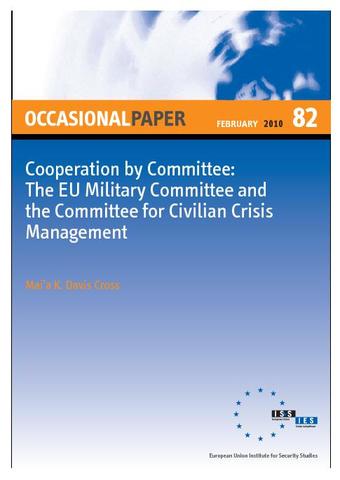You are here
Cooperation by Committee

Member States have established a permanent presence in Brussels to enhance the EU’s capacity to decide, and to facilitate their own influence on intergovernmental policy issues as they arise. Within these permanent representations there is a complex hierarchy of national actors organised into committees and working groups, some tasked to provide advice, others to contribute technical knowledge, and those at the top, to make decisions of political importance. These national representatives perform their work in a transgovernmental setting, in some cases spending more time with their counterparts from other representations than with those in their own. To gain a better understanding of policy outcomes flowing from Brussels it is helpful to begin to expose the inner workings, processes, and discourses that occur on a day-to-day basis within these transgovernmental groupings. This paper examines the examples of the Civilian Crisis Management Committee (Civcom) and EU Military Committee (EUMC), to shed light on this dynamic within the field of ESDP, the EU’s cornerstone policy mechanism for crisis response in third countries. Drawing upon dozens of interviews, the following analysis compares the expertise, culture, meeting frequency, and norms of the two committees, and how these factors influence their overall internal dynamic. A number of illustrative examples as well as an analysis of the committee-capital interaction shed light on how and why the two groups are able to shape ESDP outcomes on a regular basis. In terms of the processes within the committees, the evidence suggests that the EUMC has a higher level of internal cohesion, and a more tangible common culture. Civcom is still emerging in this respect, but in many ways Civcom faces a bigger challenge given the unprecedented nature of its activities. Ultimately, these officials must answer to the decision-makers in their respective capitals, and thus their ability to be persuasive as a group will play a crucial role in the future development of ESDP.